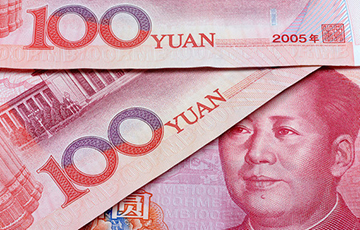Reuters: Russia Begs China For Loans
11- 26.02.2024, 16:18
- 16,432

It agrees to take yuans.
Russia wants to take loans from China — but actually on the latter’s terms. It is assumed that the loan will be received in Chinese currency — yuan.
This was stated by Russian Finance Minister Anton Siluanov, Reuters reports. He noted: negotiations between Russia and China on the loan have been going on for a long time, but there is no solution yet.
“Negotiations with Chinese partners have been going on for a long time. There is no solution yet. We discussed this topic at the end of last year at the inter-ministerial dialogue,” the Russian minister said.
At the same time, he emphasized: Russia is ready to begin testing payments in digital currencies with China. As well as the countries of the Eurasian Economic Union.
At the same time, let us recall: at the beginning of a full-scale invasion of Ukraine, Russia intended to demonstrate its strength and dominance to Europe — and force it to pay for gas in rubles. However, the plan did not work — both individual EU member states and the union as a whole refused to comply with the Kremlin’s demands.
Over time, Russian President Vladimir Putin stated that Russia is ready to switch to foreign trade settlements in yuan. And not only in trade with China, but also with third countries, including countries in Africa and Latin America. A continuation of this was the Kremlin’s de facto agreement to receive a loan from China in the latter’s currency.
Russia is running out of money for a rainy day
Meanwhile, in almost 2 years of full-scale war, Russia has spent half the money from the National Welfare Fund (NWF), the main source of resources for a rainy day. At the end of 2023, almost 4 trillion rubles were spent from the National Welfare Fund, and now only 5 trillion remains in its so-called liquid part (savings in currency and gold that are easy to spend if necessary).
At the same time, the fund also has an illiquid part. And in general, the total capacity of the National Welfare Fund decreased by 12%, to 12 trillion rubles. However, the state can only invest the illiquid part, which exceeds the liquid part, so it will not be possible to pour this money into the economy.
As analysts explained, Russia has less money for a rainy day, since in the first half of 2023 Russian oil was trading at a discount compared to other brands, the ruble exchange rate was relatively strong, so the required volumes were not received — and currency from the National Welfare Fund was sold. However, in the summer the situation changed: prices rose, the ruble weakened — and the authorities were finally ready to replenish the money.
“However, after Prigozhin’s rebellion, the dollar exchange rate soared to 100 rubles. And additional demand for currency would have accelerated the devaluation even more, so the National Welfare Fund was not replenished,” the analysts said.
At the same time, due to the need to finance an expensive war —“the items “National Defense” and “National Security” increased by 60% compared to 2021”— budget spending exceeded the legal limit by 3 trillion rubles. In addition, the budget deficit turned out to be higher than expected.
However, it is noted that the National Welfare Fund is “only a part of Russian reserves.” Therefore, it is incorrect to say that Russia is running out of reserve money. Nevertheless, there are indeed many doubts about the future of the fund.
“Formally, if the same rate of spending is maintained, the liquid part of the fund will be exhausted already in 2025. ...After the elections [of the Russian President in March 2024], experts expect new sanctions and, as a result, problems for the economy that may require new rounds of financing,” the analysts concluded.









